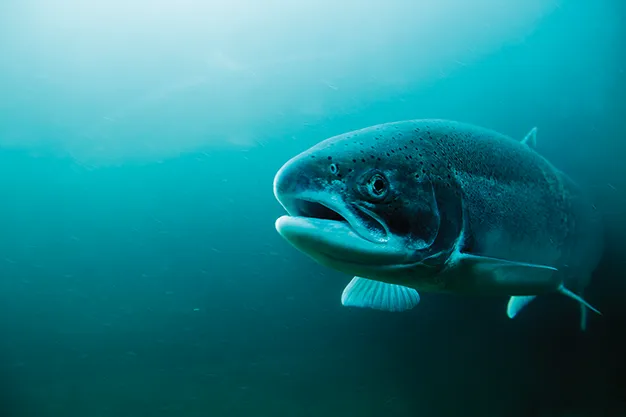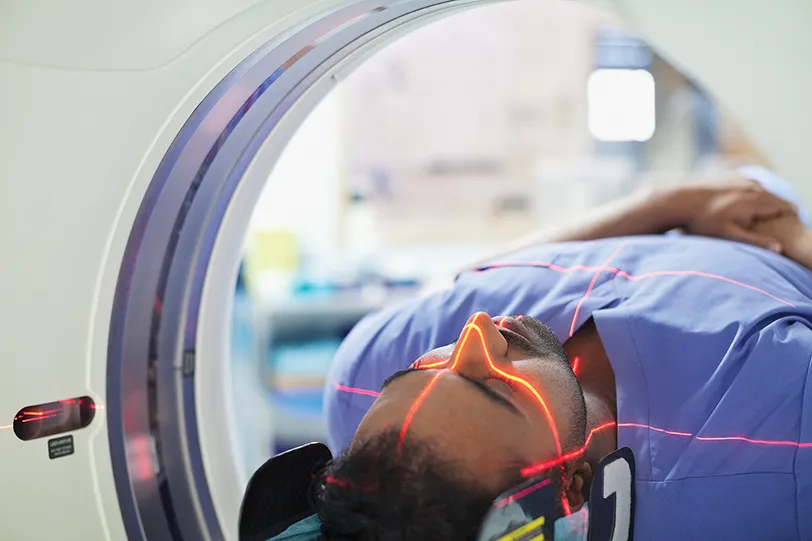What Is Behavior?
The primary subject matter of this book is behavior. Thus, it is important to begin by defining that term. In this book, behavior is defined as an individual living organism’s activity, public or private, which may be influenced by external or internal stimulation.
A fish watches the current, looking for edible materials. When something tasty floats by, the fish strikes. This strike is a response – a single instance of behavior.
Source: David A Birkbeck / E+ / Getty Images
Source: Mimagephotography/Shutterstock.com
You think about your future and consider what kind of job will make you happy, while simultaneously allowing you to pay the rent on time. Having a thought is also a response – a single instance of a different kind of behavior.
Let’s dissect the definition of behavior provided in italics above. The first word indicates behavior is something individuals do – the fish that strikes a bug does so as an individual. Likewise, when you think about your job prospects, you think your own thoughts, as an individual. Behavior is something individuals do.
Focusing on individual behavior is consistent with the goals of those who seek the expertise of a psychologist, counselor, or behavior analyst. The individual experiencing depression, the parent of a child diagnosed with autism, the manager of an underperforming employee, they all want the behavior of an individual – self, child, and employee, respectively – to change in an adaptive direction, that is, a reduction in depression, an increase in social interactions, and an increase in productivity. If you were depressed, you would not be satisfied with the services of your therapist if they said, “Sorry you aren’t doing any better, but 4 of my other 10 patients are getting better.” While that is great for them, this helps you in no way. Your depression is experienced as an individual, and an effective therapist who treats individuals will seek to understand your behavior and the factors that can effectively reduce your depression. This requires a focus on the behavior of the individual – you.
The second component of our definition of behavior is that it is something that individual living organisms do. Applying an electric current to a dead fish will produce reflexive movement, but it will not produce a fish that strikes when its next meal floats downstream. Likewise, if you were dead, no amount of electrical stimulation to precise brain regions would revitalize your ability to contemplate a future career path. Moreover, while we acknowledge that advancements in the field of artificial intelligence and robotics have created robots that learn and behave in ways remarkably similar to animals, we will restrict our definition of behavior to the actions of biological organisms.
The next part of the definition – public or private – simply means that some behavior is public (everyone can observe it happening) and some behavior is private (you are the only person who can observe it). The bug-striking behavior of our fish is public – it can be observed by the fish, other nearby fish, and by anyone who takes the time to set up an underwater camera to watch the fish strike its prey.
Source: Hero Images/Getty Images
By contrast, thinking about your career is a private behavior. Only you can observe the entirety of your thoughts as you think them. If you did your career contemplation while lying in a functional magnetic resonance imaging device, we could observe the areas of your brain that are active as you are thinking, but it gives us no access to the content of your thinking. Hence, this behavior remains private.
The final component of the definition – which may be influenced by external or internal stimulation – means behavior can be affected (changed) by stimulus events (things you see, hear, smell, taste, or feel) and these stimulus events can occur outside or inside your body. For example, the bug floating toward the fish is an external visual stimulus – the bug is outside the fish’s body and when the fish sees it the visual stimulus increases the probability of a striking action. Without the visual stimulus, the probability of striking is very low. Likewise, the internal stimulation of hunger increases the probability of searching for food and striking a bug when one is encountered.
Just like the fish, your own private behavior – contemplating career choices – is influenced by external and internal stimulation. If your biology instructor is charismatic and speaks convincingly of the joys of being a professor (external stimuli), the probability of contemplating this career path is increased. Simultaneously, a number of internal stimuli can increase (e.g., caffeine’s stimulating effects) or decrease (e.g., a headache) the probability of a career contemplation session.
What Is Behavior Analysis?
Behavior analysis may be defined by its goals, its assumptions, and its major activities. We discuss each of these in the sections that follow. But before you read on, you should read the “How to Use the Features of This Book” section of this book’s Preface. There you will find important advice about how to read this book and how to study so that you can maximize your learning, enhance your ability to use what you learn to improve your life (and the lives of those around you), and to earn a better grade in this class. The advice comes from scientific studies identifying effective ways to study. Interestingly, these studies find very few students use these techniques, opting instead for study methods that are much less effective (e.g., highlighting your textbook and rereading it the night before the exam). You will find the advice provided in the Preface useful not only for this class, but for all of your classes. So, take a few moments to read the “How to Study” section now.
The Goals of Behavior Analysis
The broad goal of any science is to understand the phenomena being studied. Entomologists want to understand insects. Astronomers want to understand the universe. Similarly, behavior analysts seek to understand the behavior of individuals. Whether it’s you, me, your pet, or a mountain lion, behavior analysts are interested in the behavior of individual organisms.
There are many different approaches to understanding. Behavior analysts take a pragmatic approach. They want to improve the human condition (and that of the nonhuman animals with whom we share the planet) and this is reflected in the two goals of behavior analysis.
THE FIRST GOAL OF BEHAVIOR ANALYSIS
The first goal of behavior analysis is to accurately predict behavior. To understand why behavior analysts want to predict behavior, ask yourself, which would you prefer: a bus that arrives at a predictable time or a bus that arrives at an unpredictable time? The predictable bus arrives at the hour and the half-hour; it is never late. The unpredictable bus arrives at no particular time, but it arrives at the bus stop twice per hour. So, which bus would you prefer? The answer is obvious. We would all prefer the predictable bus.
Source: Wangkun Jia/Shutterstock.com
Let’s make obvious why we prefer the predictable bus. If the bus always arrives on time, then we can plan for its arrival. We can enjoy our conversation with friends a little longer, study a little longer, or finish a meal at a casual pace before we leave to catch the bus. By contrast, if the bus is u...




